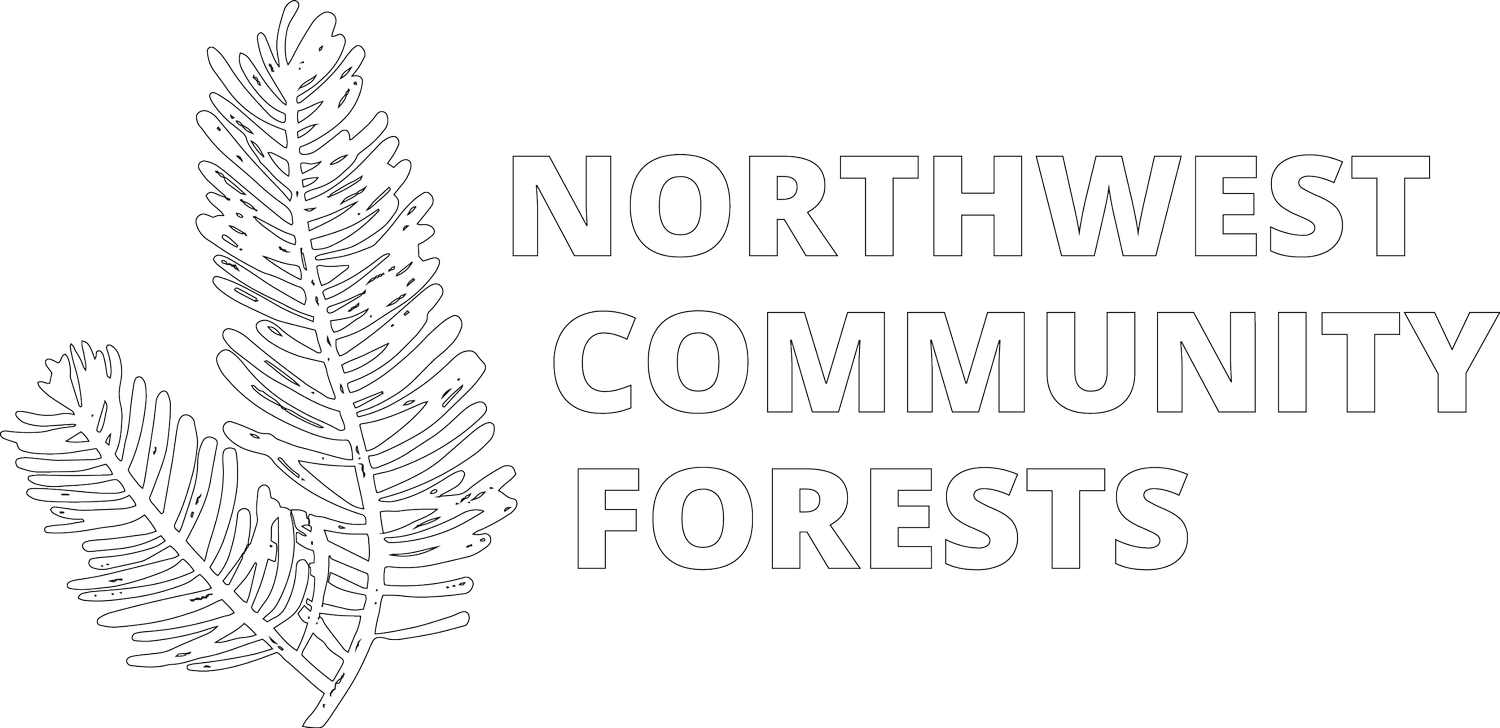A NWCFC Visit to Mt. Adams Community Forest
In Mid-October, the Northwest Community Forest Coalition met along the Columbia River to host the first in person quarterly meeting since late 2019. Many of the resources presented upon during the meeting are shared at the “Fall Quarterly Webpage”.
For those who were able to join in person, the highlight of the trip was certainly our visit to Mount Adams Community Forest, led by Coalition Chair Jay McLaughlin and the Team at Mt. Adams Resource Stewards (MARS). Our tour highlighted the collaborative approach to land ownership that is required in Community Forestry, and the impressive partnerships that have developed in the foothills of Mt. Adams.
Our tour started off at Camp Draper, where the MARS office is located, and owned by the Conservation Fund, as a part of their recently acquired Lupine Forest Project (which you can read more about here). We welcomed coalition members from: Clackamas County Soil and Water District, Columbia Land Trust, Kalispel Natural Resources, Nisqually Land Trust, Nuveen Natural Capital, Oregon State University, Sustainable Northwest, The Conservation Fund, Trust for Public Land, US Forest Service, Washington State’s Recreation and Conservation Office, and Whatcom Land Trust, a full group to say the least!
Our first stop was to the 280 acre Pine Flats Tract of the Mt. Adams Community Forest. During this portion of the tour, we heard from Lucas King, MARS’ certified burn manager about recent prescribed burning projects that have taken place within the tract. Lucas and his team highlighted how they approach designing burns, and the benefit that fire has on an ecosystem. Given the historical use of fire in the region, prescribed fire within the community forest goes beyond reducing fuel loads and effectively improves soil seed beds, reduces resource competition, and helps restore nutrients in the soils. When possible, MARS implements prescribed burns across the community forest and uses their successes as an example of effective ecological forest management to surrounding forest owners.
The next portion of our trip included a visit to a tract of forest within the Conboy Lake National Wildlife Refuge. This property is owned by the US Fish and Wildlife Service, and spans over 6,500 acres of lake beds in the Conboy and Camas lakes, mainly a marshy wetland ecosystem, with forested portions of the property located in the higher elevation parcels. MARS is currently managing the forested portion of the Conboy Lake NWR, to ensure effective ecological management of the property. Within this property, MARS is able to apply much of the active management expertise they have gained from ownership within the community forest. We got the opportunity to see ecological forestry management that was able to balance active harvest, priority species survival, and habitat protection for priority bird species.
Our final stop of the tour was a visit to the Klickitat River Canyon property. Recently purchased by Columbia Land Trust, Klickitat River Canyon provided an incredible vista, overlooking the Klickitat River, the Klickitat Community Forest (owned by WA DNR), and towards upstream forest managed by the Yakama Nation. Seeing the scale of the Klickitat River, and the foothills leading up to Mt. Adams was breathtaking, and a wonderful opportunity to share how different community forest management approaches are being taken between Mt. Adams Community Forest, and the Klickitat Community Forest below.
Following the tour, much of our group was able to reconvene at Camp Draper and enjoy a barbeque provided by our wonderful hosts, MARS. Thank you everyone for joining and making this opportunity happen, we look forward to our next site visit, and in person quarterly meeting this coming spring!
Interested in sharing a story about the a community forest within our region?
Reach out to Daniel Wear, dwear@sustainablenorthwest.org for more information



